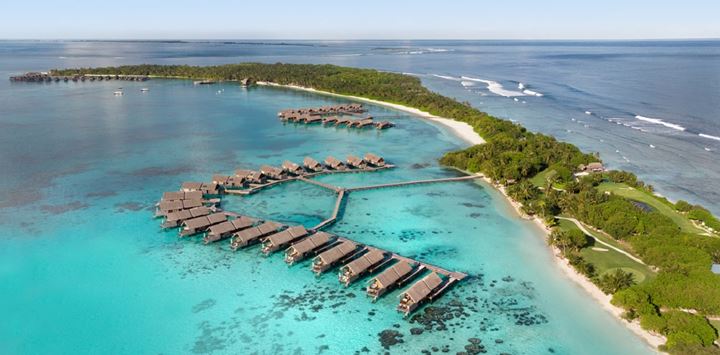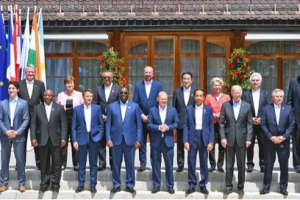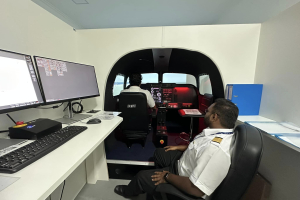Male’, Maldives – The latest Green Fund report by Ministry of Finance of Maldives has revealed that Addu City only contributed MVR 183 to the national Green Fund during the month of August, being the least contribution among those which contributed.
The Green tax, which is collected by Maldives Inland Revenue Authority (MIRA) from tourist resorts, hotels and tourist vessels at the rate of USD 6, as well as from tourist guesthouses at the rate of USD 3 since 1st October 2016, is payable by tourists who stay at the facilities, with the exemption of locals and resident permit holders.
As per the latest report published by the Ministry on 8th October, the statistics for the month of August showed that among the contributors to the fund during the month, Addu City, located at the southern most tip of the country, contributed the smallest amount, being MVR 183.84 with no contribution from resorts, hotels or tourist vessels, while Shaviyani atoll placed further up north in the country came in second, having have contributed MVR 276.48, also with no contributions from resorts, hotels or tourist vessels.
However, Kaafu Atoll located in the center of the country contributed a whopping MVR 1,865,519.18 in green tax during the same month, reflecting upon the contrast between the atolls from the far South and North, with that of the central area of the country. Mean while, Raa atoll contributed MVR 728,643.31 to the fund from just resorts alone, as south Alif atoll (Alif Dhaalu) contributed MVR 500,894.21 from resorts and guest houses.
The report showed no contribution to the fund from Haa Alif and Haa Dhaalu atoll, which are the northern most atolls of the country, as well as from Thaa, Laamu and Gaafu Dhaalu atoll, which are located in the south central and southern region of the country respectively.
An overlook of the report suggests that the most tourism activity was concentrated towards the central atolls of the country and decreased gradually towards either end of the country, being South and North.
The amount contributed by Addu City reflects the effect of Covid-19 on the tourism industry of the city, as all four main tourist facilities of the city either remain closed or only provide services to locals and resident permit holders. With the borders of Maldives having have closed during March, the tourism industry suffered insurmountably with two major resorts – Shangri-la Villingili Resort & Spa and Canareef Resort – being forced to cease operations for an indefinite period of time.
While guesthouses in the region are set to open on the 15th of October, the future of Addu’s tourism industry appears bleak with the Gan International Airport, the international airport of the city having no scheduled or chartered international flights coming in as of now.
However, an agreement has been signed with the national carrier of Maldives which also operated a seaplane fleet, and Gan International Airport to commence seaplane operations between Addu City and Huvadhoo atoll, which has nine registered resorts as of now. The operation is set to begin two months from now, which the government hopes would increase international traffic to the region.
The Tourism Minister of Maldives, Dr. Abdullah Mausoom addressed the lack of tourism activity in the southern and northern area of the country during the signing ceremony of the seaplane agreement between Addu and Huvadhoo, stating that the government is doing a lot to develop tourism industry in the northern and southern region of the country.
Speaking further on the matter, highlighting the lack of bed capacity in South, Minister Mausoom said that even at present, there are more than 2,400 beds which are yet to open in the region and that this is not an adequate number for international flights to operate. He explained that an additional 6,000 beds would be required to make the investment feasible.
“However, given the situation, some sacrificed need to be made, and that sacrifice is being made by the government.” said the Minister. “The decision being made today is whether flights will not be operated until the 6,000 bed capacity is ensured, or whether flights will be operated until the 6,000 bed quota is met, or whether it would be done either way with losses shared by the companies.” Minister Mausoom stated during the signing ceremony held on 3rd October, 2020.
Reminding the gathering that the year 2022 would mark 50 years since Maldives introduced tourism into the country, Minister Mausoom said that the bed capacity will continue to increase and that by 2022, the tourism industry of the south will become a profitable business.
The tourism industry of Maldives suffered immensely since Maldives the outbreak of Covid-19 in early 2020, however, with the number of cases decreasing and medical advancements being made in the field, Maldives has reopened its borders for tourists on July 15th.
Having have earned the title by World Travel and Tourism Council (WTTC) on the 15th of September, Maldives has welcomed more than 13,500 tourists since July. Multiple resorts have since opened up with safety measures in place, to provide the ultimate vacation experience in the paradise on Earth they call home.





